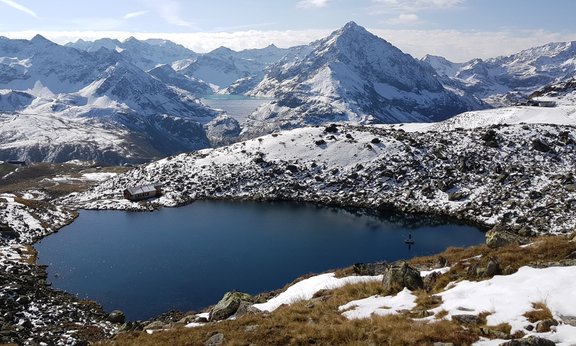Scientists from the University of Innsbruck have decoded the genomes of the viruses and were able to show that Polinton-like viruses are an important new group of viruses that occur in lakes and rivers all over the world. Bellas and his team were able to identify more than 500 other viruses from this group. "We were looking for new giant viruses in Lake Gossenköllesee, but unexpectedly found many smaller Polinton-like viruses that had never been documented before," says Christopher Bellas. "The biodiversity of invisible microorganisms in alpine lakes is largely unknown. Therefore, understanding the diversity of viruses is important as they influence the mortality of many microbial species. In times of emerging viruses, such as the new SARS-CoV-2, the discovery of new groups is not only exciting, but we can also learn strategies that viruses use to cause infections in microorganisms," clarifies Ruben Sommaruga. However, it is still unclear how these viruses behave and, in some cases, who they infect.
Virulent life
Viruses have a bad reputation and are often seen as a problem for humans. "What is less well known, however, is that viruses are among the most abundant biological entities on the planet. In a teaspoonful of river, lake or sea water, there are millions of viruses that infect other living organisms. Most are completely harmless to humans because they infect microscopic animals, plants and bacteria, which they hijack and reprogramme to produce new virus particles," Bellas explains. Every day, viruses destroy huge numbers of microorganisms in the environment, changing the flow of energy in food webs on a global scale. Discovering new groups of viruses and understanding how they interact and infect their hosts allows scientists to better understand their role in the environment. To study viruses in the high alpine Gossenköllesee, Bellas, Sommaruga and their team used a technique called metagenomics to sequence large amounts of DNA from the lake water to determine which viruses are present and which organisms might be infected by them. "When we did the computational assembly of the viral genomes, we were surprised to discover so many viruses that were different from what we already knew. As a result, they were also very difficult to identify. With the new knowledge of their DNA sequence, we were then able to search global microbial DNA databases and show that Polinton-like viruses are found in rivers and lakes all over the world, not just in high alpine lakes," Bellas said. From the analysis, it appears that the viruses could infect a wide range of microscopic eukaryotic organisms, including abundant groups of algae in lakes. Researchers have previously discovered similar DNA segments, known as "polintons", in the genomes of many microscopic organisms and larger animals. Until now, however, it was not clear what these entities were. "Our results show that in the case of microorganisms, polintons exist as free viruses in lakes and rivers, likely infecting a wide range of microbial life. The viruses we have discovered are currently referred to as 'polinton-like viruses' until we can better understand and categorise them," explains the ecologist. The detection of these viruses raises many more questions about how these viruses interact with their hosts and why they are so common. "We hope to further investigate these viruses in alpine and other lakes," Christopher Bellas and Ruben Sommaruga conclude.

